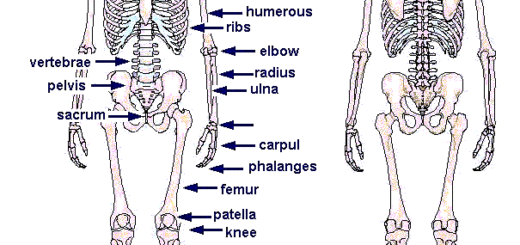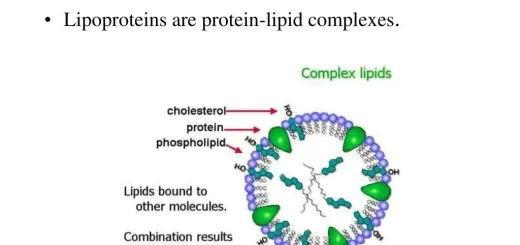Excretion in plants, Importance and types of transpiration for the plant
The plant makes transpiration, whereas the water vapour passes from the exposed parts of the plant to the surrounding air and some of it condenses and forms drops, if you add the condensed liquid to anhydrous white copper sulphate, it becomes blue, confirming that the liquid is water.
Excretion in plants
Water is absorbed by roots, Water ascends through the xylem tissue of the stem to the leaves and the water lost by transpiration generates a pull to raise water upwards, There is no specialized excretory system in plants since the excretion in plants doesn’t cause any problem, this is for the following reasons :
- The rate of catabolism in a plant is much lower than that in an animal that has the same weight, so, the accumulation of metabolic wastes in the plant cells will be very slow.
- The green plant reuses the catabolic wastes as carbon dioxide and water, which result from respiration, will be utilized again in photosynthesis, The plant utilizes the nitrogenous wastes in the synthesis of required proteins (since the metabolism of plants is based mainly on carbohydrates rather than proteins, this reduces their excretory needs, as the wastes of carbohydrates metabolism are less toxic than those resulting from the protein metabolism).
- The metabolic wastes such as organic salts and acids are stored in the form of insoluble crystals in the cells of terrestrial plants mainly in the cytoplasm or in the vacuoles, since these crystals are insoluble, they will not cause harm to the cells.
- Many plants get rid of CO2 and some mineral salts through their roots.
- Plants that live in soils rich in calcium can get rid of the excess amounts of this element by its accumulation in the leaves which are finally shed (expelled out).
- CO2 which results from respiration and O2 obtained from photosynthesis are excreted through the stomata by diffusion.
- The excess water is cast through the transpiration or the guttation.
Guttation
It is the excretion of the water drops at the leaf tips of some plants in the early morning in the spring, There is a special system for guttation which consists of one or many loose cells, opening by the water stomata called the hydathode which is opened permanently day and night, The water of guttation contains the other substances which can therefore be deposited when the water evaporates rapidly.
Transpiration
Transpiration is the loss of water in the form of water vapour, Types of transpiration are stomatal transpiration, cuticular transpiration, and lenticular transpiration.
Stomatal transpiration
The loss of water in the form of the water vapour through the stomata, The amount of water lost by the stomatal transpiration is more than 90 % of the total amount of water lost in the plant, Most of the transpired water is lost through the leaves, because stomata are present in plant leaves rather than in any other vegetative organ.
The mechanism of stomatal transpiration:
- The water transmits in the form of vapour through the moist cell walls of the mesophyll tissue and it evaporates into the intercellular spaces.
- Water vapour diffuses out into the atmosphere through the stomata.
- The same process occurs in the other cells that overlook other intercellular spaces in the different plant tissues.
Cuticular transpiration
The loss of water in the form of water vapour through the epidermis covered with the cuticle in the vegetative organs, The amount of water lost does not exceed 5 % of the total amount of water lost in the plant, Cuticle is a waxy layer of cutin, covering the epidermis of leaves and other plant parts, this layer repels water but has some permeability to water vapour.
Lenticular transpiration
The loss of water in the form of water vapour through the lenticels, The amount of water lost by this method is very small, Lenticels are the openings that are present in the cork layer of the trees’ stem.
We can conclude that great quantities of water are absorbed from the soil, mainly through the roots, water is then transferred through the conductive tissues to the stem and leaves, At the same time the plant continuously loses most of this water ( as mentioned earlier ) .
Importance of transpiration for the plant
Decrease of plant temperature
A large amount of energy absorbed by the leaves is in the form of heat or is converted into heat inside the leaf tissues, This may cause a rise in the leaf temperature, especially on sunny and warm days, This rise in temperature harms the protoplasm and could lead to its death, So, the transpiration decreases the plant’s temperature through water loss.
Ascent of water and salts from the soil
The soil water enters the root cells by osmosis because the root cells contain cell sap with a concentration ( of soluble organic and inorganic substances ) higher than that of the soil solution, The water moves from the root hairs to the inner root tissues, till it reaches the xylem vessels and tracheids by osmotic pressure.
The water rises upwards through the xylem vessels of the stem, through the vessels of the leaf ( veins ) and at the end it reaches the mesophyll cell sap, hence decreasing the ability of these cells to pull up more water, There are intercellular spaces full of air between the mesophyll cells to which water vapour passes.
As a result of the continuous loss of water from the mesophyll cells, their sap concentration increases, and so their ability to pull water upwards increases, This explains the transpiration cycle and its role in the ascent of water.
Osmotic pressure is only enough to move water through the plant stem for a short distance by what is known as root pressure, But the adhesion and cohesion theory explains the role of transpiration in water movement in a height reaching up to 125 meters in tree vessels.
Sensitivity in plants (Tropism types, response to touch and darkness)
Asexual and sexual reproduction in plants, Pollination and Stages of fertilization process in plants



